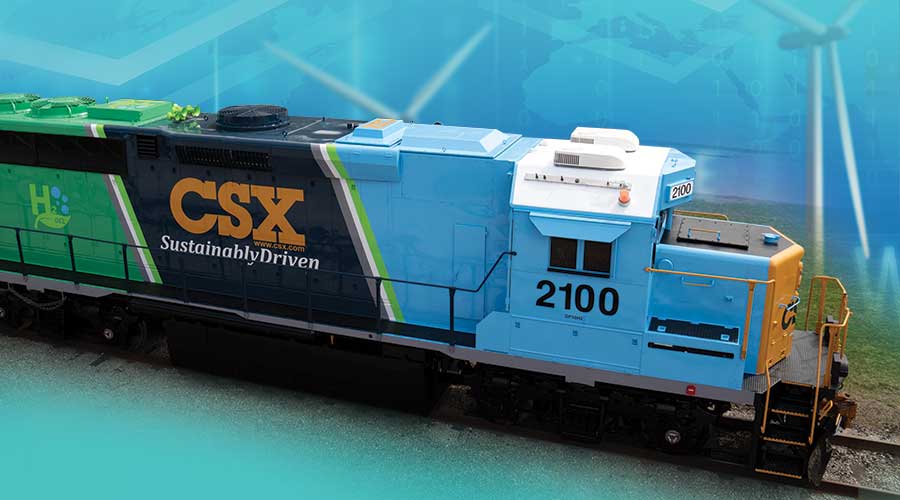Stay updated on news, articles and information for the rail industry
August 2023
Rail News: CSX Transportation
No Ordinary Joe: A non-traditional Class I leader, Hinrichs compels CSX to be more collaborative and customer-focused
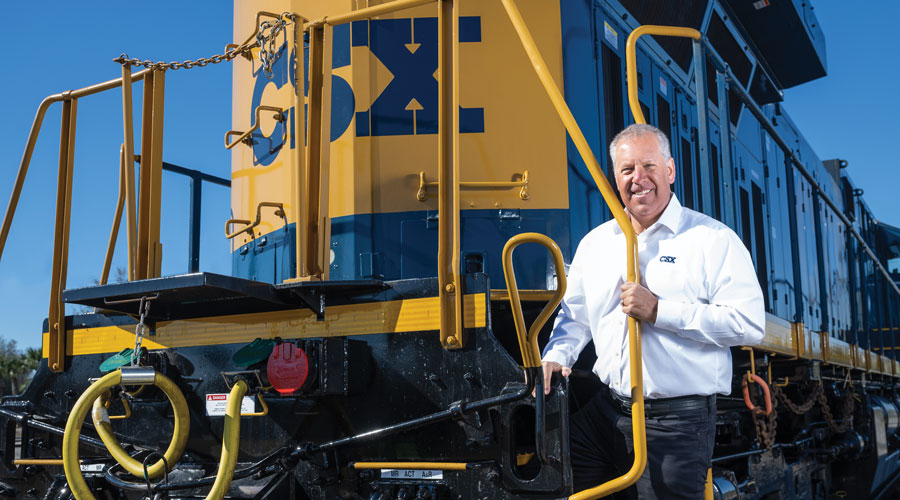
By Jeff Stagl, Managing Editor
After he joined CSX as president and CEO in September 2022, Joseph Hinrichs assumed every rail car was equipped with a tracking device to monitor location at all times. But he quickly learned that’s not the case, at least not yet.
The rail industry is working on that capability, such as through the RailPulse coalition that’s addressing the use of GPS and other telematics technologies on North American freight cars.
Hinrichs researched CSX and read a lot of material about the Class I prior to taking the top job. At the time, he was president of Ford Motor Co.’s global automotive business and led the company’s $160 billion automotive operations, overseeing the global business units, Ford and Lincoln brands, and all automotive skill teams. He was familiar with railroads since Ford is a major rail shipper, but there was much to learn about railroading, especially the ins and outs of a Class I.
Hinrichs, 57, sure has learned a lot about CSX. Much of what he came to understand shortly after taking the reins — a la the rail-car device situation — either wasn’t what he had anticipated or what he hoped to discover.
Such as that, although CSX had a solid precision scheduled railroading model in place and was mostly fluid, the Class I wasn’t consistently providing the service that many customers need and expect. Or that the majority of employees viewed the organization as detached, aloof and uncaring. Or that major partners and stakeholders — including the Surface Transportation Board, Amtrak and rail labor unions — considered their relationships with CSX to be very strained.
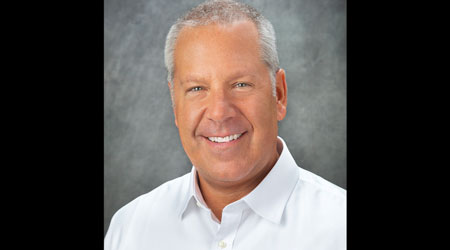
Hinrichs has spent the past 11 months trying to turn those and other weaknesses into strengths. And he’s pursued what he believes are the key objectives — bolstering service, execution, safety, teamwork and business relationships — by stressing that CSXers need to work smarter to benefit both themselves and others rather than just work harder to better serve the company. That’s quite the nontraditional approach for a Class I CEO.
If he can continue to gain buy-ins and generate payoffs, the chances increase that prosperous growth lies ahead for the railroad and its customers, shareholders and employees. Plus, CSX then could “bring back the love affair of railroads” that has been sorely lacking among shippers and other rail industry stakeholders for a long time, Hinrichs said during an interview on July 20.
“We need to show customers we can provide reliable and predictable service, and do it repeatedly. And we need to create an environment so we can work to make that happen,” Hinrichs says. “Our strong operating model and system was a strength coming in, but we weren’t focusing on customer service. Now, that’s an ongoing journey, a work in progress.”
All for ‘One’
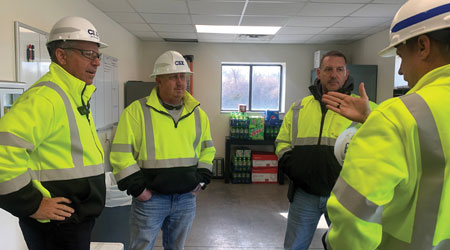
In terms of improving the company’s work environment, Hinrichs has championed a One CSX concept that was introduced in 2021 prior to his arrival. CSX leaders admit One CSX is difficult to define — it’s more of a feeling, spirit or sense of purpose. But the concept essentially is a set of guiding principles, behavioral guidelines and initiatives designed to remold the company’s culture and prompt the organization to operate as one cohesive team.
One CSX generally seeks to forge a more supportive and positive culture, and better consider the needs of all stakeholders who measure the railroad’s success as a company.
With more well-defined values and expected behaviors, as well as better collaboration and communication across the company, CSX leaders can foster an environment in which every employee can thrive as a member of the team, says Hinrichs.
“It’s all about how we can work together to make the company what we want, and about how our leaders should behave. It shows how everyone has a role to play to serve the customer, and how we will improve hand in hand to connect the dots,” he says. “It will help employees feel they are appreciated, respected, valued, included, listened to and able to contribute to our broader business objectives.”
Hinrichs previously helped implement a similar concept — One Ford — at the automaker, which he served for more than 30 years in various executive roles involving global manufacturing, materials planning and logistics. His positions included president of global operations; president of the Americas; president of Asia Pacific and Africa; chairman and CEO of Ford China; and chairman and CEO of Ford Canada. Hinrichs began his career as an engineer with General Motors Corp. in 1989.
Ford recognized him for his dedication to operational excellence, consistency with helping to increase profits and engagement efforts with the workforce. He also was lauded for managing large teams and working seamlessly with a variety of stakeholders to build collaborative relationships to help generate positive business outcomes.
Hinrichs throughout his career has demonstrated an unwavering commitment to operational excellence, to developing people and a culture, and to obtaining a deep understanding of balancing safety and efficiency, Ford leaders believe.
Since he came from a rail customer, Hinrichs has challenged CSX’s leadership team to view things through the lens of a shipper, said Shannon Baker, the head of customer solutions for the Class I, during a July 11 presentation at the Midwest Association of Rail Shippers summer meeting in Lake Geneva, Wisconsin.
“He has renewed our focus on the customer experience. Joe has been very gung-ho from the beginning to make the experience better,” she said. “He doesn’t just want CSX to be the best Class I, but the best transportation service provider. He’s been passionate about that from Day 1.”
Feedback from the field
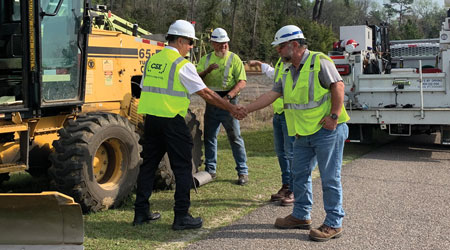
Hinrichs also has sought feedback from field employees about how the organization is and could be functioning. He has conducted more than 50 site visits to various CSX facilities, most of which were unannounced so he could have impromptu conversations with workers.
He heard many times how employees harbored hurt feelings about how they struggled through the pandemic and had difficulty dealing with the accusatory and negative nature of national contract negotiations, Hinrichs says.
“It’s important to focus on how employees feel. Many of them felt they weren’t valued,” he says.
The company has been trying to improve employees’ work-life balance. CSX was the first Class I to negotiate national contracts that include sick leave, says Hinrichs.
In addition, increasing headcount by hiring thousands of workers has provided CSX the necessary manpower to improve and sustain higher levels of service. As car cycle times and service performance have improved, more workers are able to return home sooner after a shift.
“Work-life balance is huge. We’re working on things to ensure trains and crews aren’t in the wrong spots,” says Hinrichs, adding that those issues can cause frustration.
And what do many CSX customers find vexing these days? The Class I’s service metrics, since they mostly reflect how the railroad sizes up its own operational performance versus how a shipper views the service it’s receiving.
“We have a lot of metrics to measure ourselves, but most of them are internally focused,” says Hinrichs. “So, we stepped back and asked ourselves: Are we performing as well as customers measure it? Are all the metrics aligned to show we are improving service? We need to do what we say we are going to do for a customer’s trip plan.”
CSX currently has service metric sub-categories that measure performance as customers define it, he says.
“When talking to large customers, the conversations now start with how much better we are performing. That wasn’t the case a year ago,” says Hinrichs.
But some customers are still lodging complaints, such as about poor communication with the railroad. For example, several shippers say they aren’t learning fast enough about a weather event or a train breakdown that might impact their service.
“Customers want visibility at all times, and we are working on that,” says Hinrichs.
Measuring up
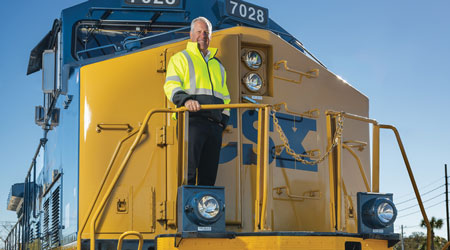
Although CSX needs to keep focusing on performance improvements, it’s making headway with providing more reliable and consistent service. In 2023’s second quarter, carload trip plan compliance reached 84% compared with 59% in Q2 2022. In addition, intermodal trip plan performance climbed to 96% from 90%, average train velocity increased to 17.7 mph from 15.3 mph and average terminal dwell time fell to 9.3 hours from 11.8 hours.
“This shows the progress we are making with engaging field employees and with having a better culture,” says Hinrichs. “We are gaining momentum with customers and One CSX is taking hold.”
The sales team also is striving to increase direct engagement with shippers, especially medium- and small-sized ones, to leverage the railroad’s improved performance and divert traffic from trucks. Team members conducted 25 “whiteboarding” sessions with shippers in 2023’s first half to share what the railroad is doing to make its network more resilient and to gain their confidence.
The sessions won’t necessarily bear fruit immediately, but could translate into opportunities to shift traffic share from trucks later, whether it’s lane by lane, or carload by carload, CSX leaders say.
In addition, other efforts to build more business include implementing new technological tools to better serve customers, expanding the transload network and better collaborating with Class I and short-line partners. For example, as other Class Is continue to improve their operational performance, the collective service provided to customers will improve, as well, says Hinrichs.
“We look at each other as competitors, but [a lot] of traffic involves connections between railroads. We all can grow together,” he says.
Better fate with teammate
More collaboration with other Class Is can help spur growth, too. To that end, CSX in June teamed up with Canadian Pacific Kansas City to create a new interchange connection in Alabama. Each of the Class Is will acquire or operate portions of Meridian & Bigbee Railroad LLC — a Genesee & Wyoming Inc.-owned short line that operates in Mississippi and Alabama — to establish a new freight corridor connecting Mexico, Texas and the U.S. Southeast.
Also in June, CSX and CPKC announced plans to jointly develop and build hydrogen conversion kits for diesel-electric locomotives.
Unfortunately, CSX wasn’t able to muster much financial growth in the second quarter. Stiff economic headwinds and some soft markets — including chemicals, forest products and international intermodal — were the culprits.
Revenue dipped 3% to $3.7 billion, net earnings dropped 15% to $996 million, operating income fell 13% to $1.48 billion, volume dipped 3% to 1.55 million units and the operating ratio climbed 4.5 points to 59.9 on a year-over-year basis.
The Q2 2022 results included a $122 million gain related to a Virginia property sale agreement, so it wasn’t all apples-to-apples comparisons. But what did help were strong volume gains in the merchandise and coal businesses.
Considering the ups and downs, the main takeaway for now is that strong service performance is distinguishing CSX in the marketplace and attracting shippers to the railroad’s network, Hinrichs says.
Robert W. Baird Co. Inc. analysts agree. CSX’s improved service product is driving more customer engagement — the Class I’s sales pipeline activity rose 30% year over year, Baird analysts said in a July 20 report.
“Service-led freight conversion, competitive wins and site development benefits should support improving volume growth and operating leverage [at CSX],” Baird analysts said. “We continue to like the execution [and] longer-term outlook.”
There are other things that some analysts like, as well. In a dull economy, CSX’s merchandise volumes rose 3% in Q2, which is “a pretty good story,” wrote independent rail industry analyst and Progressive Railroading columnist Tony Hatch in a report issued late last month.
The Class I’s earnings came closest to matching Wall Street expectations, but Hinrichs didn’t necessarily receive credit for that — instead the market/analyst reaction to CSX’s financial results was overly harsh, Hatch believes.
“Is the honeymoon over for still-new CEO Joe? No, it isn’t,” he wrote, adding that for Hinrichs and CSX, even outperforming other railroads and transport companies on a relative basis likely isn’t good enough.
The Class I’s safety performance in Q2 wasn’t good enough, either, although several measurements improved. CSX’s Federal Railroad Administration personal injury frequency index dropped to 0.81 from 1.7 in both Q1 2023 and Q2 2022, and FRA train accident rate declined to 3.25 from 3.71 in Q1 and 3.87 in Q2 2022.
Can’t let safety or service slip
However, in the most important safety category of all — fatalities — CSX rated very poorly in Q2. The railroad suffered its first fatality in two-and-a-half years in the quarter, Hinrichs said.
On June 25, a CSX conductor trainee was killed when he fell from a rail car during a shoving move and was hit by a train at the Seagirt Marine Terminal in Baltimore. The trainee fell as the train slowed after he had communicated that the train needed to stop within five car lengths.
[Editor's note: A CSX worker also died Aug. 6 due to fatal injuries suffered from falling off a train in Cumberland, Maryland.]
Safety is a guiding principle at CSX, but more vigilance is required, Hinrichs stresses.
“Our fundamental goal is to make sure that every one of our employees gets home safely every day. When that does not happen and we lose one of our colleagues, it affects us deeply,” he says. “It’s a reminder why we make so much effort on safety and how much more work we need to do.”
CSX is trying to reinforce its safety principles, especially to new hires, and eliminate life-changing events. The Class I aims to lead the rail industry by demonstrating a robust safety plan and establishing an even stronger safety culture.
So, there’s more work ahead — a lot more — in all phases, Hinrichs says. Complacency won’t cut it if the company wants to achieve all of its short- and long-term goals, including sustainable growth, value creation and a safer organization.
CSX still expects low single-digit revenue ton-mile growth for the full year, driven by merchandise and export coal volumes. Merchandise traffic growth will benefit from service recovery, strength in the automotive and minerals businesses, and more customer wins, CSX leaders say.
Meanwhile, full-year coal volume should rise due to higher export shipments and domestic intermodal activity should gain momentum. The primary focus will be on efficiency gains to counter strong inflationary pressures.
The encouraging news of late is that CSX is winning market share in many business sectors and reaching all-time-best and industry-leading service metrics, which is translating into growth in the core merchandise business even in the face of macroeconomic headwinds, Hinrichs says.
“Our network continues to run well,” he says. “Our company’s initiatives combined with our employees’ hard work and commitment to making a big difference are helping to set our railroad apart.”
Email questions or comments to jeff.stagl@tradepress.com.


 2025 MOW Spending Report: Passenger-rail programs
2025 MOW Spending Report: Passenger-rail programs
 Gardner steps down as Amtrak CEO
Gardner steps down as Amtrak CEO
 Guest comment: Oliver Wyman’s David Hunt
Guest comment: Oliver Wyman’s David Hunt
 Women of Influence in Rail eBook
Women of Influence in Rail eBook
 railPrime
railPrime




